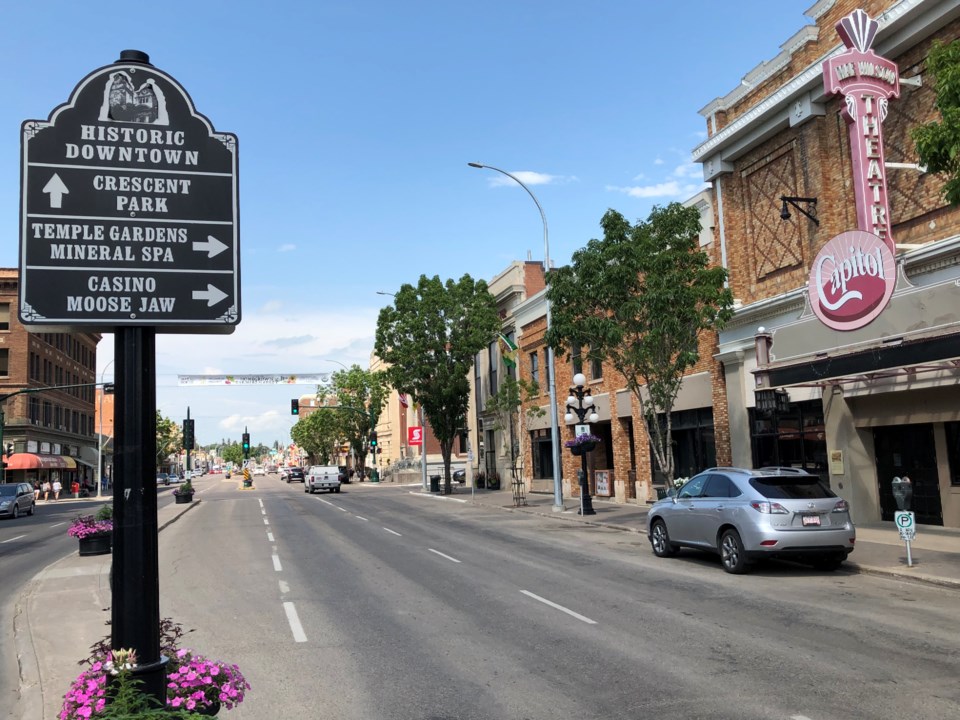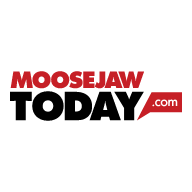City hall will work with stakeholders to implement a downtown local area plan (DLAP) that cost $100,000 to create and has been shelved since 2017, while it will also determine if interest from the parking reserve can support the plan’s priorities.
During its May 25 regular meeting, city council voted 6-1 to have city administration develop a strategy that includes specific, measurable, achievable, realistic and timely (SMART) objectives in partnership with the Downtown Moose Jaw Association and other stakeholders to implement the DLAP. Furthermore, any spending recommendations and their source of funding must come to council for discussion during the capital budget talks.
Coun. Brian Swanson was opposed.
Background
The DLAP is a comprehensive report with important initiatives, but few of them have been completed yet, explained Jim Dixon, economic development officer. City administration wants to ensure the plan is used and doesn’t sit on the shelf.
The main components of the plan are heritage conservation strategy, infill strategy, public realm plan, character areas, and implementation strategy. Also included are recommendations for streetscape improvements, public art, and wayfinding. Potential projects could happen in Crescent Park, while there are design guidelines for new buildings and storefront renovations.
In previous years — namely, the 1980s — the municipality used proceeds from parking meter receipts and fines to fund downtown improvement projects, Dixon continued. During the past few years, parking interest has gone into reserves, including $48,741 in 2017, $51,248 in 2018 and $55,360 last year.
It’s unlikely there will be similar investments generated for the parking reserve this year due to the coronavirus, he added.
Council discussion
There is an issue with creating plans such as this and then not aligning them with the budget process or creating a strategy to implement them, said Coun. Crystal Froese. This plan has been shelved since 2017 and not moved once. Council should engage stakeholders and provide enough time to ensure there is a strategy to spend money in future budgets.
The plan has a 30-year time frame, so some projects are in the future, but council could have completed many in the past two years, she added. While the projects never lined up with the budget and there was no public engagement, she was happy council was moving forward with this.
Enhancing the downtown
Council spent millions of dollars in the 1980s on capital projects in the downtown, with money from the operating budget supporting those initiatives, said Swanson. However, that disappeared due to spending fatigue and the fact the cost-benefit didn’t add up. The only thing missing now from this new DLAP is large amounts of money, which council’s five-year capital plan does not have.
Swanson also wondered if the downtown association was setting up a business improvement district (BID) so it could levy funds from its members to contribute money to the DLAP.
Before the pandemic struck, that association was gathering memberships to contribute to these initiatives since it wants to be involved and wants to organize as a BID, explained Coun. Dawn Luhning. Currently, most members are focusing on surviving the coronavirus’ effects.
Funding should come from others
City hall spent plenty of money in the 1980s in the downtown, on everything from new sidewalks to lights to façade programs, said Swanson. The downtown BID had a budget of $390,000 in 1986-87, but in the end, the results did not justify the expenses.
Swanson thought was history repeating itself with the creation of this new DLAP and implementation of its priorities.
“There should be — before we get to step 1 — funding from the other organizations that are stakeholders (in this), other than just the taxpayers of Moose Jaw,” he added.
Those improvements in the 1980s were useful because you could shoot a cannon down Main Street since it was so empty, said Froese. Moose Jaw’s downtown — which other communities likely envy — is improving today thanks to economic development.
Refreshing the community
“It’s not just about bricks and mortar; it’s about refreshing our community,” she continued, including refreshing the downtown’s heritage aspect since that industry brings in millions of dollars each year.
“I’m very grateful for the vision the people had back in that time,” Froese added. “But it’s time to revisit that. We approved that (DLAP) plan. We need to implement these things.”
Swanson refuted Froese’s comment about an empty downtown in the 1980s, saying there was more retail space then than now.
The next regular council meeting is Monday, June 8.




